Best cheap looper pedals 2025: 8 bang-for-your-buck loopers for your ’board
Score a looper for under $80 and spark your creativity with our pick of the best budget pedals from TC Electronic, Electro-Harmonix, Boss and more

Why a guide to the best cheap looper pedals, you may ask? When you are starting out, it is hard to scrape together enough allowance or Saturday-job cash for one pedal, let alone many. Or maybe you are just loop-curious and want to dip a toe in without dropping serious coin. Either way, there is no need to overspend to get looping.
Regardless, in terms of usefulness, loopers are high up the list. If you are a one-person band, then they are nothing short of essential. Even if you play with others, they're a valuable tool for jamming, songwriting or even live use, especially if you're the only guitarist in a band.
While the ideal loop pedal might be a floorboard unit like the flagship Sheeran Looper, the reality might be a bit more modest, depending on your budget. Here, I've rounded up some of the best cheap looper pedals currently on the market. For the purposes of this article, I set the budget loopers' upper limit at $250, give or take a couple of dollars.
If you want to know my top pick, I've given the no.1 spot to the TC Electronic Ditto - a compact, robust pedal that boasts some serious power.
If you have any burning questions, we’ve cooked up a handy FAQ section at the end of the article. Otherwise, let’s dive into the best affordable loopers you can get your hands on right now.
My top picks
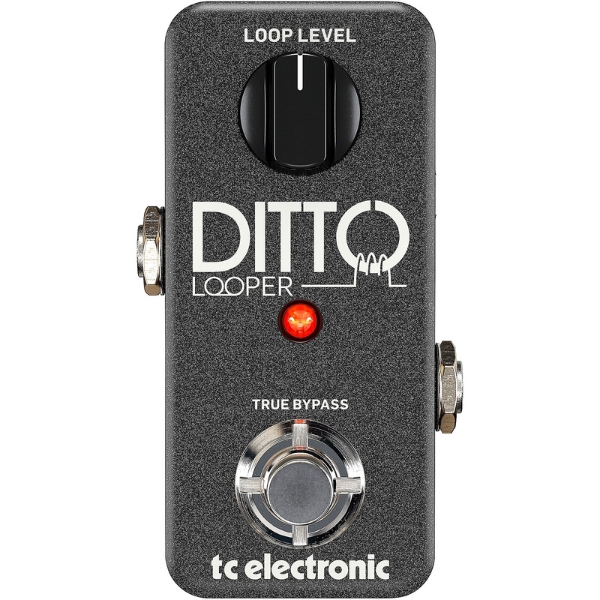
The TC Electronic Ditto has been a pedalboard staple for years and remains so in the face of some tough competition. You get five minutes of loop time and unlimited overdubs, and while the single footswitch can be fiddly live, it remains a solid looper pedal.
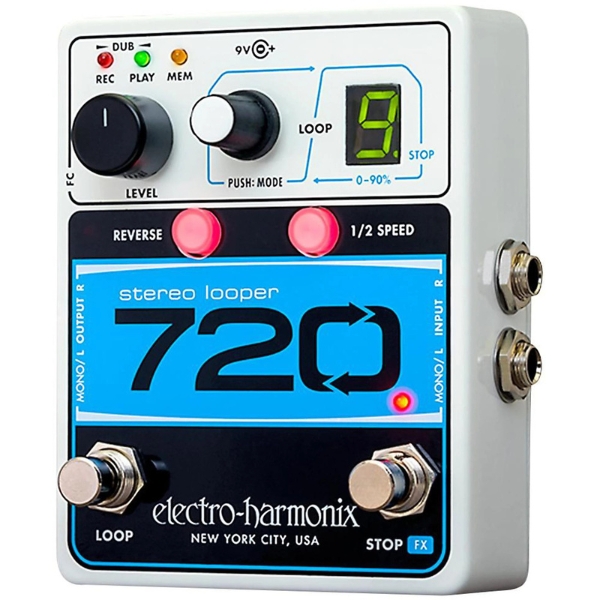
The 720 in the pedal's name relates to its 720 second capacity - that's 12 minutes of high-quality, uncompressed stereo looping. There's some nice effects to dig into too, such as reverse, half-speed, and a trails function. Build quality is excellent too.
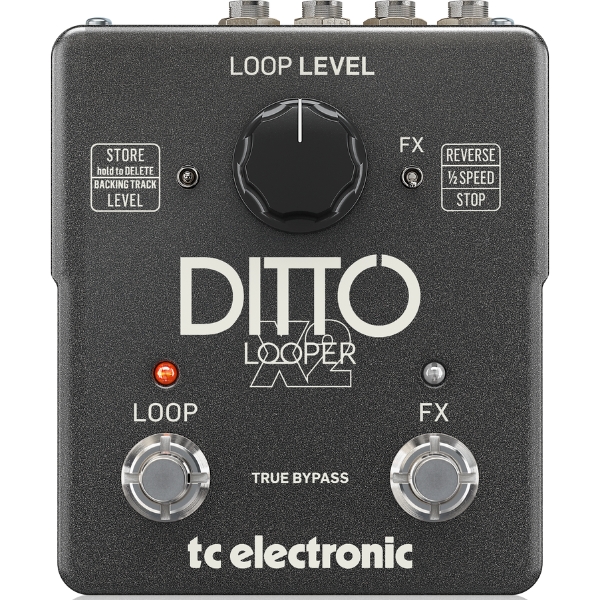
The TC Electronic Ditto X2 in an easy to use looper pedal that boasts great sound quality and it also has the ability to load loops via USB - a nice touch if you want to trigger audio from a studio session. It's tough too and is available for an excellent price.
Best overall

1. TC Electronic Ditto
Our expert review:
Specifications
Reasons to buy
Reasons to avoid
✅ Buy if you want a rock solid pedal for a great price: The TC Electronic Ditto's price makes it stand out from the crowd and will give you five minutes of loop time.
❌ Avoid if you want a bigger pedal: The Ditto is small and can be a little fiddly to use in a live setting.
Build quality rating: ★★★★★
Usability rating: ★★★★½
Sounds rating: ★★★★★
Overall: ★★★★★
The tiny TC Ditto has been a pedalboard staple for years. While its single footswitch can be a bit fiddly in live settings, it remains a powerful tool for writing and jamming.
You get five minutes of loop time and unlimited overdubs, giving you plenty of room to build a simple idea into a fully fleshed-out track, complete with layered harmonies and lead lines. If you are comfortable managing record and play/stop with one switch, the Ditto's compact size makes it a solid pick when both space and budget are tight.
I've even seen players running dual Dittos on minimalist pedalboards instead of larger, more complex loopers. For ambient drones or pad-like textures, it is a clever way to squeeze serious power into a tiny footprint.
Lastly, do not let its size fool you, TC Electronic built the Ditto to last. It can easily handle plenty of enthusiastic foot stomps while you work on nailing those loops in time.
Best for gigs
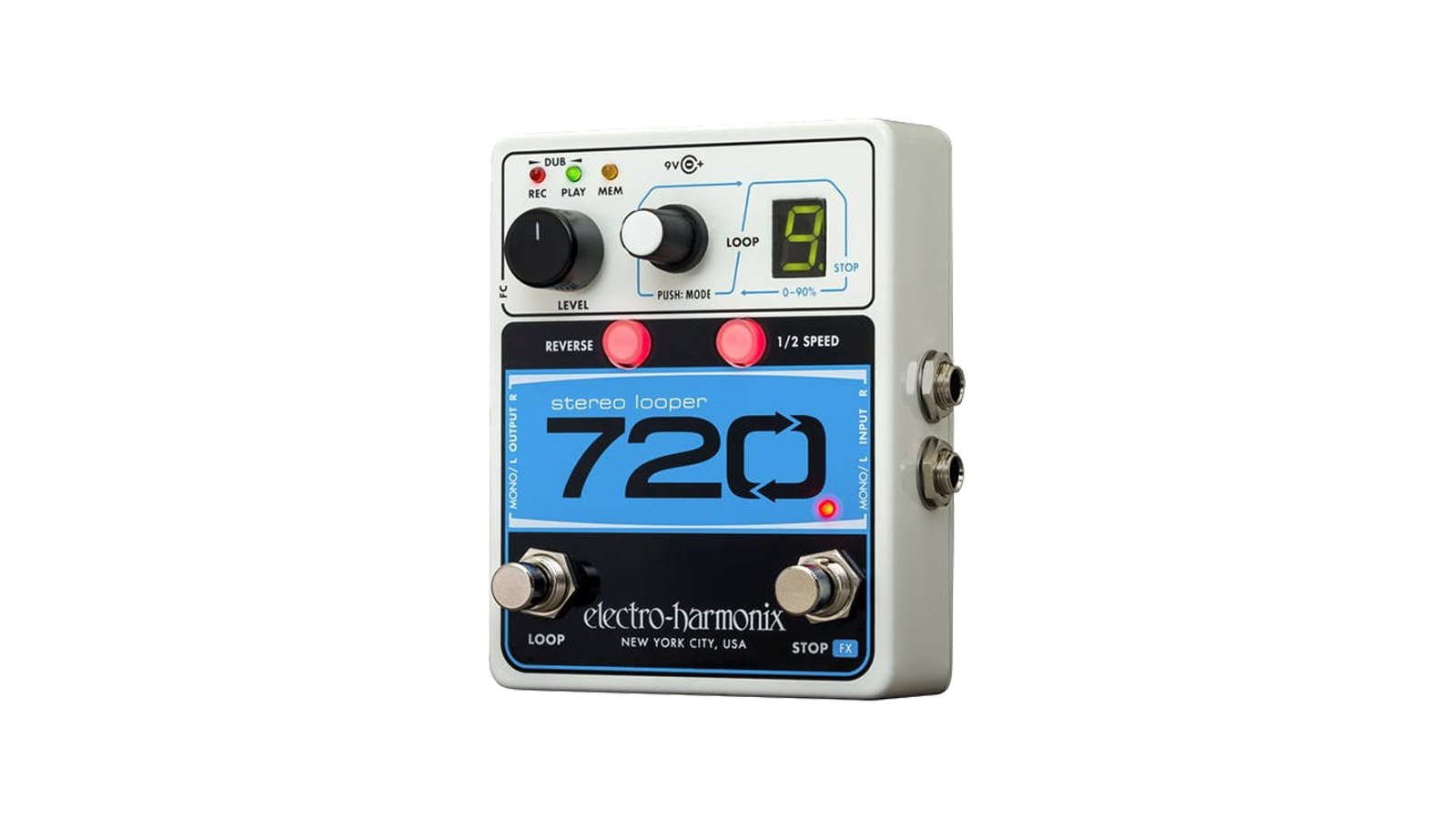
Specifications
Reasons to buy
Reasons to avoid
✅ Buy if you want a looper pedal for the stage: The Electro-Harmonix 720 excels in a live setting and boats 12 minutes of high-quality stereo looping.
❌ Avoid if you want more features from your pedal: There's no room for USB transfer or MIDI sync here, so if you want a more fully-featured pedal, this might not be for you.
Build quality rating: ★★★★
Usability rating: ★★★★½
Sounds rating: ★★★★
Overall: ★★★★
The 720 Stereo Looper takes its name from its capacity: 720 seconds, or 12 minutes of high-quality, uncompressed stereo looping. You can save up to 10 loops, each stored in a dedicated slot for easy recall during practice or performance. For hands-free control on stage, you can pair it with an external three-button footswitch to bank up/down and trigger undo/redo without touching the pedal itself.
There are also some creative effects on tap, including reverse, half-speed, and a trails function that allows loops to fade out naturally. These are genuinely useful tools for players looking to experiment with textures, ambient layers, or accidental genius.
And with two footswitches, the 720 is far less fiddly than single-button units. You can stop playback with precision, then use that same footswitch to engage effects when needed. Sure, it lacks MIDI sync and USB transfer, but if you are after a guitarist-friendly looper that nails the fundamentals with great audio fidelity and rock-solid build quality, this EHX box has your back.

"There are more fully-featured loopers on the market, but as an easy-to-use, no-frills tool that will help with both practice and performance, the EHX 720 is a solid choice."
Read more: Electro-Harmonix 720 Stereo Looper review
Best USB option
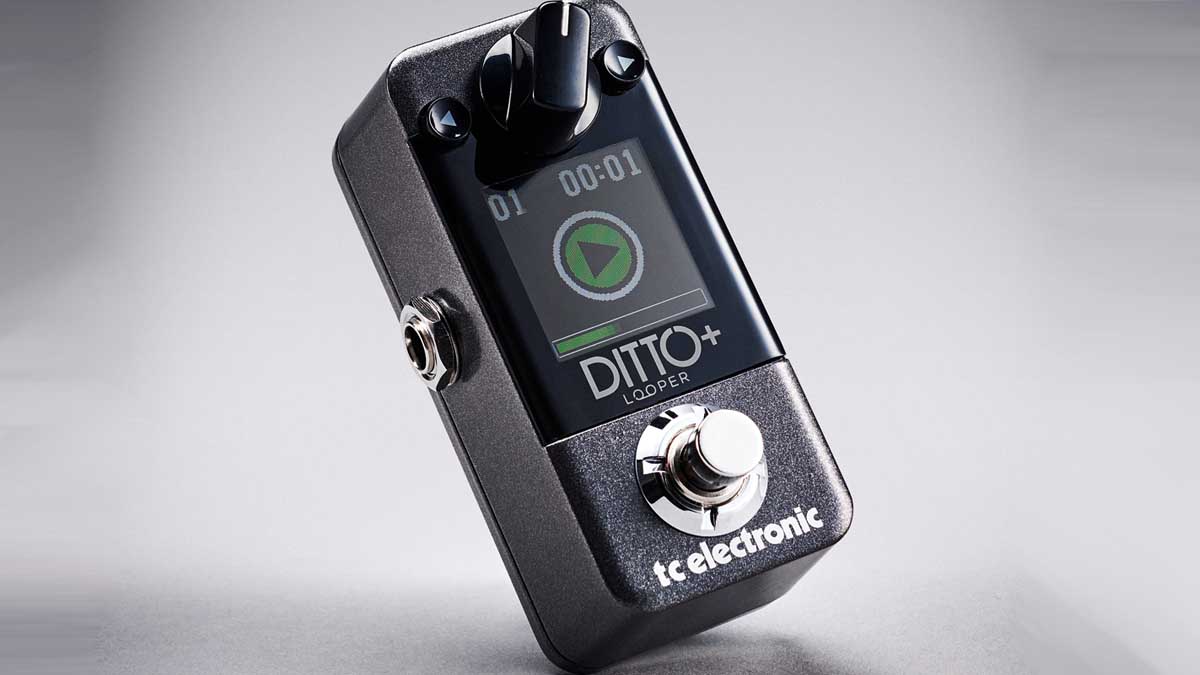
Specifications
Reasons to buy
Reasons to avoid
✅ Buy if you want to load studio tracks on to your pedal: The TC Electronic Ditto+ has 60 minutes of recording space with 24-bit looping time.
❌ Avoid if you use MP3s: There's no ability to load up MP3s here - only 44.1hz WAV format.
Build quality rating: ★★★★½
Usability rating: ★★★★½
Sounds rating: ★★★★½
Overall: ★★★★½
The TC Electronic Ditto+ is the natural evolution of the venerable Ditto which still sits at the top spot in this guide.
It costs substantially more, but is still a great deal cheaper than some of the larger loopers here. Boasting a big screen and easy-to-navigate UI, it's an intuitive and powerful writing tool.
More than that, this budget looper pedal has teeth for live use too. The loop stacking features make it far more foolproof for punching in tight loops and overdubs live.
Meanwhile, being able to load samples via USB makes it possible to work with loops and parts from studio tracks more easily.
Add all of that to a tiny form factor, and the TC Electronic Ditto+ is one capable little box.

"Despite the mini-pedal form, this is a powerful looper with an hour's worth of 24-bit looping time and the ability to upload backing tracks. Plus, it's easy to use. What's not to like?"
Read more: TC Electronic Ditto+ review
Best effects
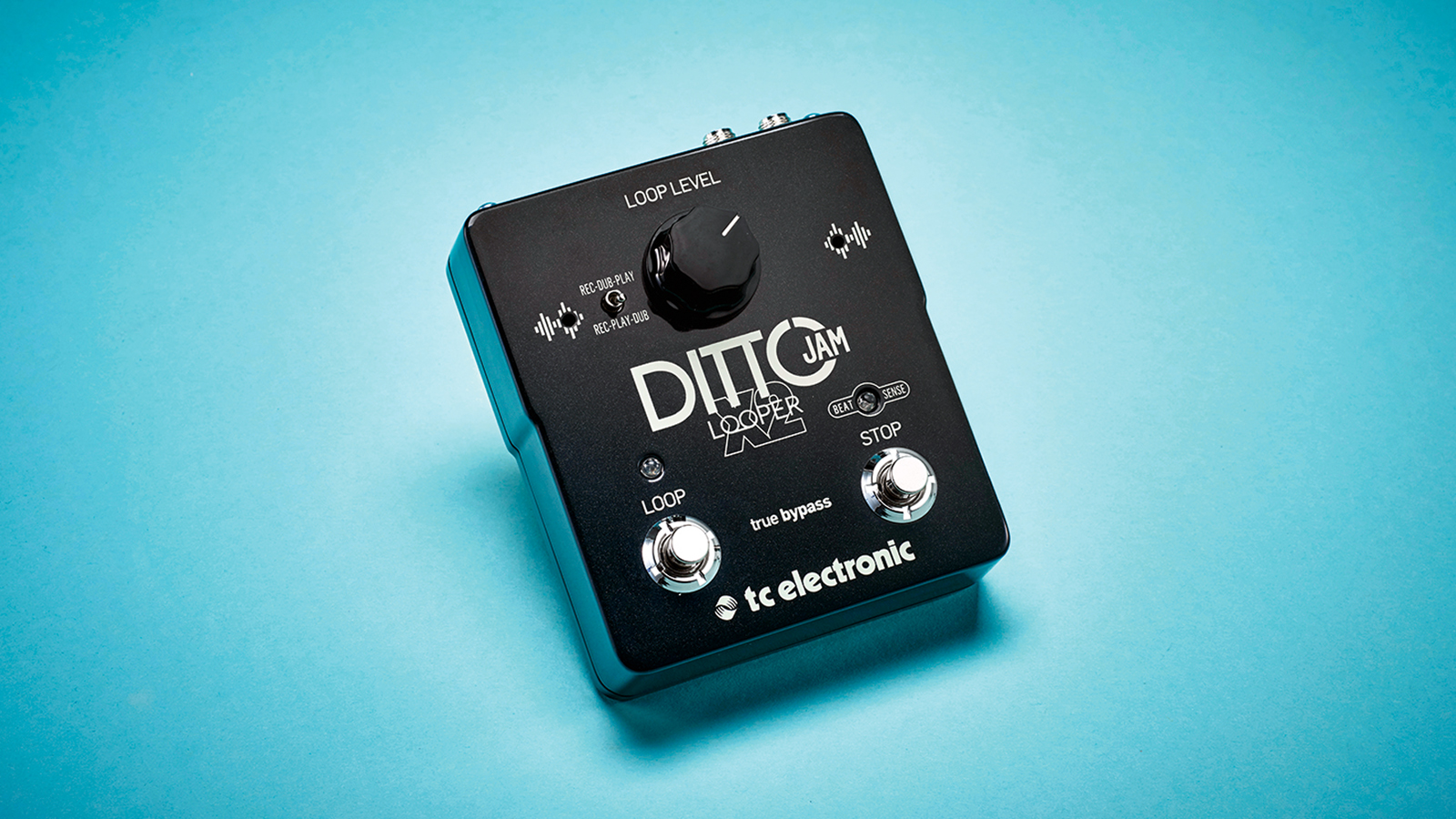
Specifications
Reasons to buy
Reasons to avoid
✅ Buy if you want a versatile looper pedal: The TC Electronic Ditto X2 has multiple playback modes and is a breeze to use live.
❌ Avoid if you want a smaller pedal: While it's a great looper pedal, the Ditto X2 isn't as compact as some others.
Build quality rating: ★★★★
Usability rating: ★★★★
Sounds rating: ★★★★½
Overall: ★★★★
As dual-button loopers go, the Ditto X2 is pretty much the benchmark. It's not small, but at least its stereo I/O is mounted on the top side, in a pedalboard-friendly fashion.
On the front, there's a single control for loop volume, but also a dedicated control for its additional modes. These modes, a reverse and half-time mode, are useful not only with guitar but also synth.
Though it tends to be the case that extra modes on a looper are accident-prone live, the way that these are triggered by the second footswitch after selection is relatively straightforward. Moreover, the master-stop control is always reinstated by returning the mode switch to stop.
You can also load loops via USB, which is useful if you want to use it to trigger sounds from a studio recording.

"For live use, a looper with a dedicated stop button is essential. The Ditto is solid, intuitive and straightforward to use, even on a dark stage."
Read more: TC Electronic Ditto X2 review
Best simplicity

Specifications
Reasons to buy
Reasons to avoid
✅ Buy if you want a simple, easy to use pedal: The Boss RC-1 has a great display and is super straightforward to use.
❌ Avoid if you want to load samples: That simplicity means there's no room to load up your favourite samples.
Build quality rating: ★★★★★
Usability rating: ★★★★★
Sounds rating: ★★★★½
Overall: ★★★★★
Perhaps it's the great feel of Boss' footswitches, but the RC-1 Loop Station is relatively forgiving for a single-button looper. The other possibility is that it feels so good because the display is great.
The massive glowing ring that displays loop length and playback is nothing short of fantastic, and makes it easy to see at a glance what's going on, even on the darkest stage.
The RC-1 is 16-bit, which puts it a bit behind some of its contenders, but it's unlikely you'll notice this live. It doesn't support external loading of samples either, but it can preserve your current loop when powered off, so that is an option, even if it's of limited utility.
But for me, the real appeal of the RC-1 lies in its simplicity. Think of it as a musical sketch pad, perfect for quickly laying down spontaneous ideas. Its super-straightforward operation means it will not get in the way or kill your momentum. If you are a songwriter chasing inspiration, the RC-1 is absolutely worth a look.

"The Boss RC-1 Loop Station is a really easy-to-use looper pedal with great functionality, 12 minutes record time, stereo ins and outs, and superb build quality. This pedal is perfect for simple looping in a live performance setting or for writing."
Read more: Boss RC-1 Loop Station review
Most durable

Specifications
Reasons to buy
Reasons to avoid
✅ Buy if you want a robust pedal for life on the road: The build quality here is excellent and there's enough features such as reverse and speed-changing facilities to keep everyone happy.
❌ Avoid if you want an easier to operate pedal: With only a single knob for level and mode means that things can get a little fiddly.
Build quality rating: ★★★★½
Usability rating: ★★★★
Sounds rating: ★★★★½
Overall: ★★★★½
On paper, the MXR Clone Looper is almost too good to be true. It's got all the meat-and-potatoes looping functionality of workhorses like the Ditto X2, while also having some of the more coveted options of classic performance loopers like the Line 6 DL4.
While the Ditto X2 supports half-time and reverse like the MXR, it can't do double time without some crafty manipulation of the half-time mode.
The Clone Looper can't go toe-to-toe with a weird experimental loop pedal like the Red Panda Tensor, as it can't do dynamic time-stretching. However, the ability to do one-shots means it has feature parity with the Line 6 DL4.
A modern pedal with all the modes that made the Line 6 DL4 such a popular live looper is pretty exciting at this price point.
So what's the catch? Pretty simple, really. The one-shot mode is only accessible using an external tap control, which of course will set you back a bit more cash and pedalboard space.

"Combining all the necessary layering facilities with a few creative extras in a compact footprint, MXR’s pedal offers practicality at a decent price for anyone who wants a looper in their locker."
Read more: MXR clone looper review
Best compact

7. Electro-Harmonix Nano Looper 360
Our expert review:
Specifications
Reasons to buy
Reasons to avoid
✅ Buy if you want a compact pedal with some nice extras: The smaller brother of the 720, you'll get 360 seconds of audio across 11 loops with this compact unit.
❌ Avoid if you're not a fan of side-mounted jacks: This is a small quibble but worth pointing out if your planning out your pedalboard.
Build quality rating: ★★★★
Usability rating: ★★★★
Sounds rating: ★★★★
Overall: ★★★★
The smaller brother of the EHX 720, as you might guess from the name, the 360 can store up to 360 seconds of audio, across 11 loops.
Like most compact loopers, it supports unlimited overdubs until you run out of space. Unlike many cheaper options, it supports save and recall, making it useful for mid-set interludes and other sound-design type uses.
The only annoying thing about this pedal is that if you don't need the save-and-recall functionality, then there are smaller and cheaper options on the market.
The side-mount jacks on the 360 mean it's not only larger than a nano-sized pedal, but nearly the size of a Ditto X2, with its top-mount jacks.
Best utility
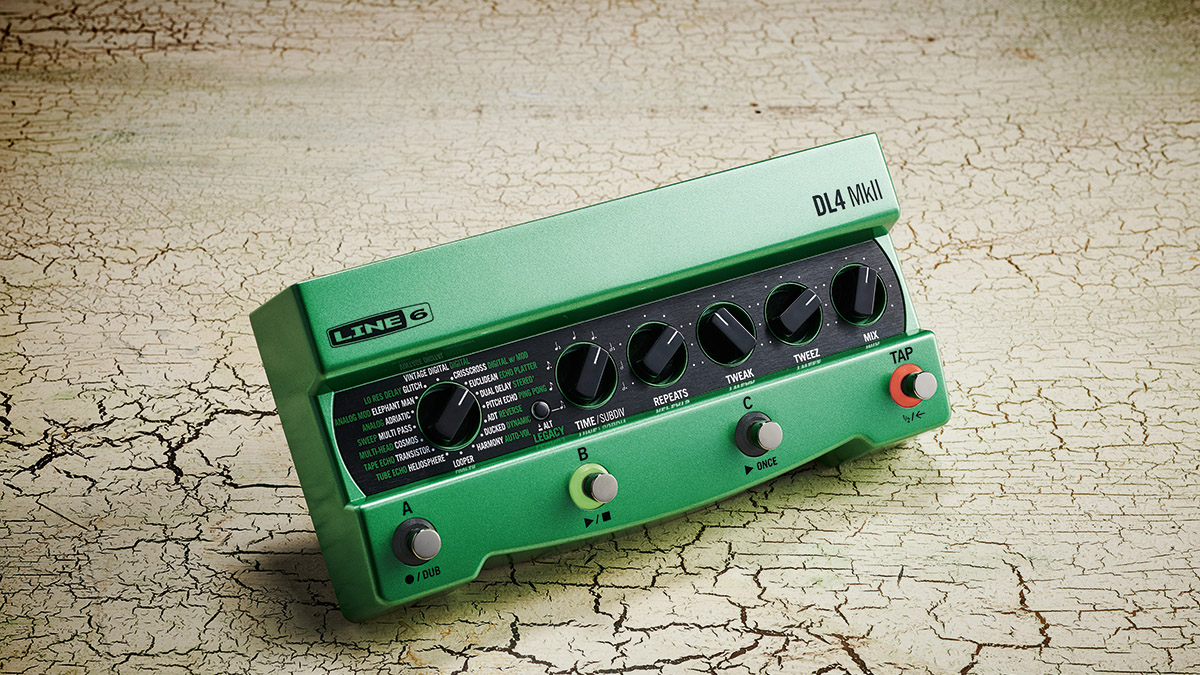
Specifications
Reasons to buy
Reasons to avoid
✅ Buy if you need more memory for your samples: The Line 6 DL4 MKII has a slot for a microSD card to boost your options.
❌ Avoid if you want a simpler looper pedal: There's a lot going on here, and some players won't need the added features.
Build quality rating: ★★★★½
Usability rating: ★★★★½
Sounds rating: ★★★★½
Overall: ★★★★½
For more than two decades, the original Line 6 DL4 was the go-to multi-delay pedal, a pedalboard mainstay used by everyone from bedroom tinkerers to arena headliners. With the DL4 MkII, Line 6 has updated a modern classic without losing the soul that made it such a hit in the first place.
As a looper, it delivers up to 240 seconds of stereo looping, or hours of overdubbing with a microSD card. You also get both a 4-switch looper and a simple 1-switch alternative, plus the flexibility to run loops pre- or post-effects.
Factor in the XLR mic input, MIDI I/O, expression pedal support, USB connectivity and preset saving, and you have one of the most complete loop/delay workstations out there.
Sure, it is pricier than other entries on this list, plus it may be overkill for some players. However, for creative potential, rugged build quality, and sheer sonic firepower, the DL4 MkII earns its place as one of the best multi-effects loopers you can buy right now.
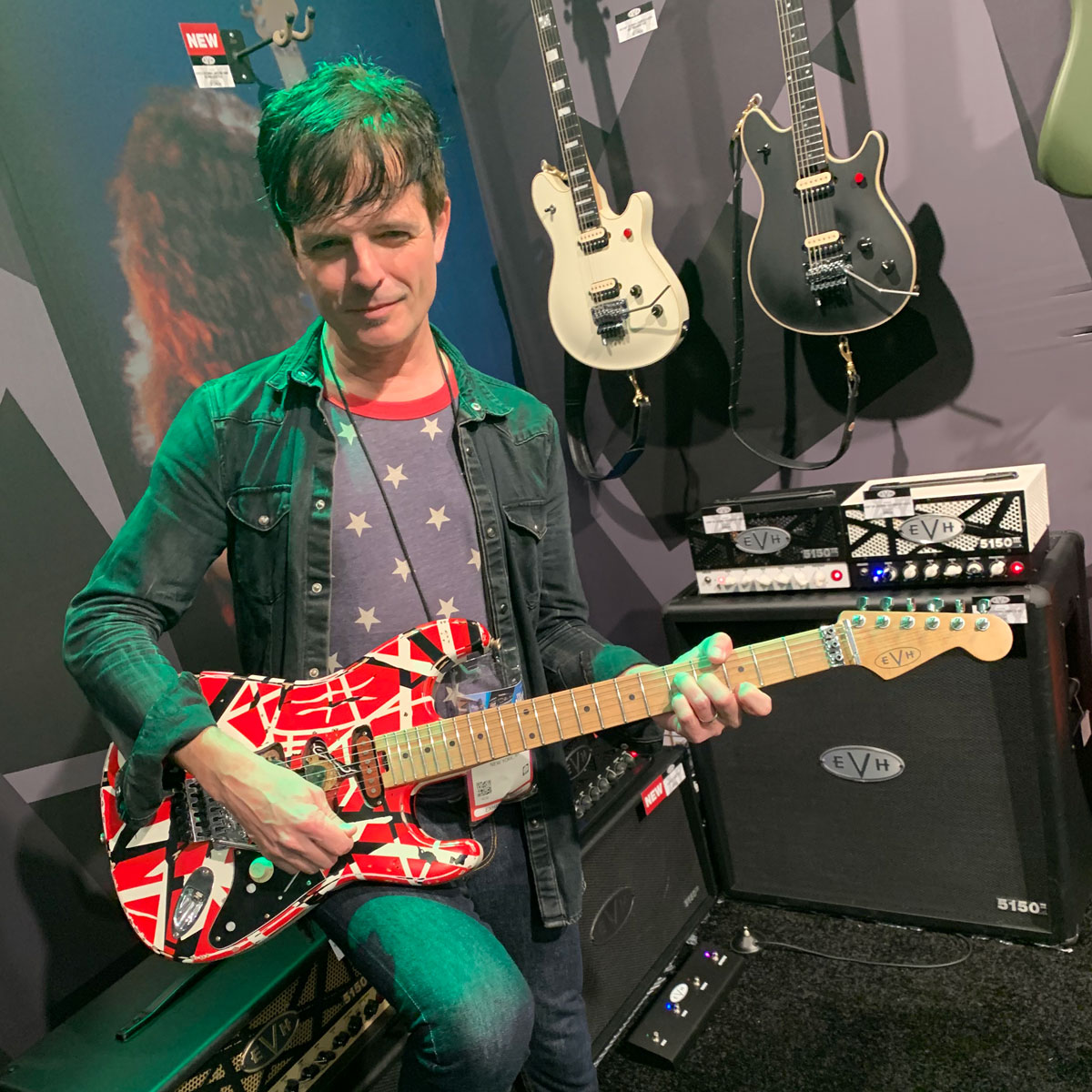
"The Line 6 DL4 MkII goes well beyond its predecessor with expanded looping time, a condensed footprint, outstanding new and former delay models, and new reverbs delivered with pristine fidelity."
Read more: Line 6 DL4 MkII review
FAQs
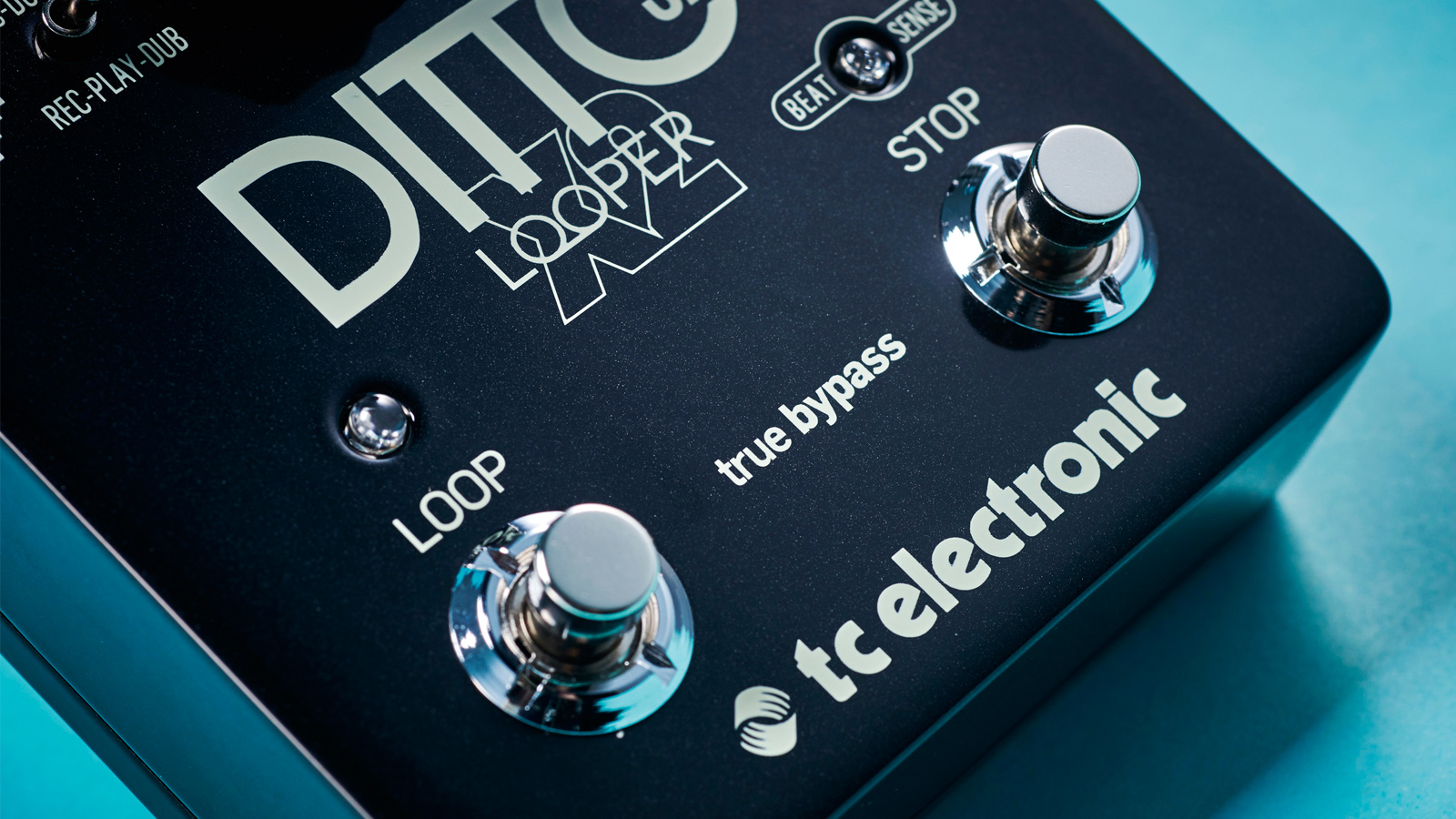
When buying a budget looper pedal, the two key concerns are audio quality, and whether or not there's a dedicated stop footswitch. We're going to sound like a broken record by the end of this article, but for live use it's better to be safe than sorry.
Though we've seen plenty of players using single-button loop pedals on stage, smoothly playing, re-triggering and stopping loops generally requires a dedicated stop control. For songwriting, jamming or home use, or indeed use for drones or synth parts, this might not be an issue. Generally, the main downside to a two-footswitch looper is price, followed closely by size. Thus, whether you're planning on gigging with it is likely to be the deciding factor.
For more expensive loopers, whether or not it has quantisation would be an important concern, as well as whether it supported an external clock or MIDI source, but in the cheap looper pedal bracket, generally that's not an option.
Finally, effects and loading might influence your choice. Many loopers have additional effects that can be applied to the loops. Usually, these are half-time and reverse modes, which can be useful for sound design or experimental textures. Some also have the ability to load and save loops externally. This massively changes how useful the looper is as a compositional tool, and as a device for triggering samples from a studio take to live.
Find out more about how we make our recommendations and how we test each of the products in our buyer's guides.
How we choose
At Guitar World, our team of experts has extensive experience playing and testing various guitar products, including many looper pedals. As dedicated guitar enthusiasts, we understand the importance of achieving the right sound and tone, and we leverage our expertise gained from using these products in live performances, recording sessions, and rehearsals to identify the best tremolo pedals for our guides.
To curate this list of top cheap looper pedals, we combine practical experience, user feedback, and in-depth discussions with our editorial team to reach a consensus. We take into account factors such as pricing, features, ease of use, and durability to ensure that we showcase the very best products available on the market.
As guitar players ourselves, we appreciate the value of having the right equipment to create the perfect sound. Therefore, we are committed to providing reliable and knowledgeable recommendations to help guitar players find the ideal looper pedal to suit their specific needs and preferences. Our ultimate aim is to assist guitar players in unlocking their full potential by elevating their sound with the best guitar gear out there.
Find out more about how we make our recommendations and how we test each of the products in our buyer's guides.
Why you can trust us
☑️ A global audience of 3.8 million guitarists monthly
☑️ 1,200+ reviews on GuitarWorld.com
☑️ 30+ years of product testing at Guitar World
Guitar World boasts over 44 years of expertise and stands as the ultimate authority on all things related to guitars. The magazine and website feature expertly written gear round-ups and top-quality, authoritative reviews penned by a team of highly experienced industry professionals.
Guitar World's inaugural print issue hit the shelves in July 1980, and ever since, it has been captivating players and enthusiasts with engaging lessons, insightful interviews with the biggest guitar heroes, and priceless buying advice for newbie players.
Furthermore, GuitarWorld.com continues this legacy online and serves as the hub of the world's foremost authorities on guitar playing. The site not only hosts content from Guitar World but also showcases articles from respected publications such as Guitarist, Total Guitar, Guitar Techniques, and Bass Player. With a reach extending to 3.8 million players each month, GuitarWorld.com is a go-to destination for guitar fanatics globally.
Meet the experts

Alex Lynham is a gear obsessive who's been collecting and building modern and vintage equipment since he got his first Saturday job. Besides reviewing countless pedals for Total Guitar, he's written guides on how to build your first pedal, how to build a tube amp from a kit, and briefly went viral when he released a glitch delay pedal, the Atom Smasher.

Ross has been a music lover and guitar player since the age of 8. He has spent the five years since graduating from university working in music retail, selling guitars, amps and more. Ross is particularly interested in electric guitars, pedals and amplifiers and his current rig includes a trusty 2009 American Standard Stratocaster and Vox AC30S1 with a few Walrus Audio and Way Huge pedals in between.
Latest updates
05/06/25: The guide has been updated to include the Line 6 DL4 MKII. Each product now features "At a glance" panels detailing pros and cons, while a star rating for each pedal has also been included. Where applicable, expert verdict panels have been inserted. A section explaining how the Guitar World team choose products has been included alongside a section on why you can trust the Guitar World team. Finally, a "Meet the experts" section now features so you can get to know the faces behind the names testing the gear.
Read more
You can trust Guitar World
- Add some juice with the best pedalboard power supplies
- Best multi-effects pedals: top do-it-all guitar effects units
- Our pick of the best Klon clones for every budget
All the latest guitar news, interviews, lessons, reviews, deals and more, direct to your inbox!
Alex Lynham is a gear obsessive who's been collecting and building modern and vintage equipment since he got his first Saturday job. Besides reviewing countless pedals for Total Guitar, he's written guides on how to build your first pedal, how to build a tube amp from a kit, and briefly went viral when he released a glitch delay pedal, the Atom Smasher.
